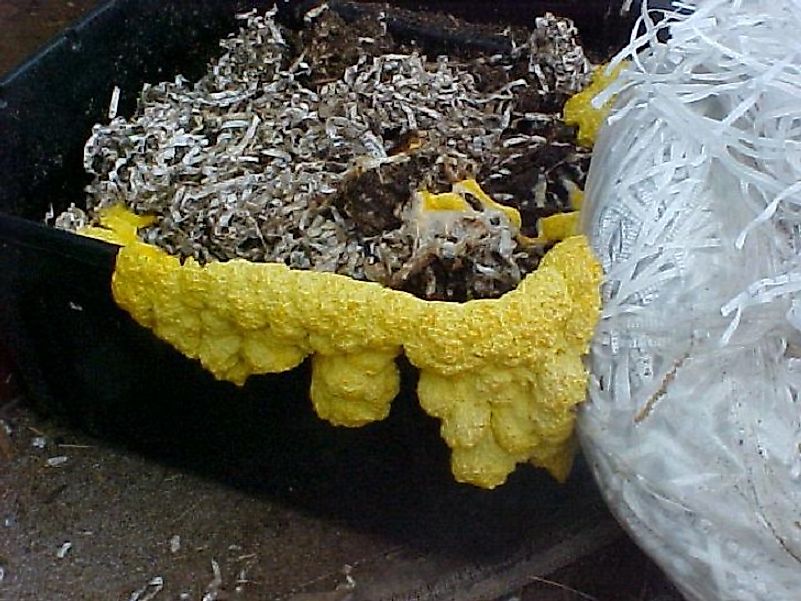Is Bioremediation An Effective Way To Decontaminate Our Planet?

5. What Is Bioremediation?
Bioremediation is a waste management technique that utilizes living organisms called bioremediators to neutralize, break-down or remove pollutants from a contaminated site. The EPA defines bioremediation as “treatment that uses naturally occurring organisms to break down hazardous substances into less toxic or non toxic substances”. Bioremediation can be carried out at the site of contamination known as in situ bioremediation or it might be carried out at a different site after collecting the waste material to a separate treatment site for bioremediation. The process of bioremediation may occur naturally or might need to be stimulated with the addition of oxygen and fertilizers.
4. Methods Used
In in-situ bioremediation technique, the decontamination of a site is carried out by the endogenous microbial populations of the site. The microbes inhabiting the place are already adapted to the organic chemical wastes and are thus able to degrade the waste via the various biochemical reactions executed by them. At times, when certain factors like oxygen or mineral nutrients become limiting, the microbes might be unable to perform their action of bioremediation. However, under such circumstances, the limiting factors are added to the site, a process known as enhanced bioremediation, to encourage a new round of microbial activity. The use of pumps and blowers to create vacuum in soil to blow in air into the empty space to supply oxygen to the microbes is known as bio-venting. With a fresh supply of air, the microbes restart their bioremediation activities, breaking down large quantities of organic wastes. Ex-situ bioremediation is carried out via various techniques like composting, "land-farming", or by using above-ground bioreactors. The above ground bioreactors, based on the same technology as simple fermentation, are used for the treatment of contaminated soil or water. Other techniques used in bioremediation are phytoremediation (wherein plants absorb contaminants from soil and metabolize the contaminants within their tissues), bioleaching (metals are extracted from their ores by microbes), and rhizofiltration (the passage of water through a mass of roots to allow the roots to absorb the contaminants in water).
3. Successes
Bioremediation has been most successful in cleaning up oil spills in the oceans. For example, the Exxon Valdez oil spill of 1989 in Alaska led to the release of nearly 11 to 38 million gallons of crude oil into the Prince William Sound, severely affecting 350 miles of shoreline in the region. One of the important ways of cleaning up this oil spill was by using enhanced in-situ bioremediation techniques where fertilizers were added to provide nutrients to the microbes in cleaning up the oil spill by their metabolic action. Superbugs (different from the drug-resistant microbes) were also created by scientists, the first one being developed in the laboratory by Indian American scientist Ananda Mohan Chakrabarty in the 1970’s. These superbugs are microorganisms that have been genetically transformed to endow them with genes that help these microbes break down toxic complex hydrocarbons, such as those found in oil spills, into less harmful substances. In 1980, Chakrabarty attained a patent for his “superbug”, this being the first patent ever granted for a genetically engineered organism. If introduced into the natural environment where oil spills have occurred, these superbugs could play a vital role in cleaning up the area.
2. Setbacks
Bioremediation is a new technology in its beginning years. A successful bioremediation program needs experts from multiple disciplines like microbiology, engineering, geology, and soil sciences to initiate, execute and complete a successful bioremediation program. However, as of yet, there is a lack of sufficient personnel who are trained well enough to execute the bioremediation procedures. Also, since this technology is not associated with any profitable end products, investment in research and development in bioremediation is slow. More intensive research is needed to produce microbes that are more efficient in degrading the highly complex hydrocarbons but funding is poor in this sector. Also, each waste site has its own requirement and thus a bioremediation program needs to be effectively tailored for each site, again demanding sufficient man-power, time and funding.
1. What Does The Future Hold?
If bioremediation is to become more popular, the above limiting factors need to disappear. The need for bioremediation is more than ever in today’s world where environmental pollution involving the aggregation of large quantities of waste matter on the surface of the Earth and oil spills covering the oceans, are leading to a massive loss of flora and fauna and affecting human health adversely. Under such circumstances bioremediation promises a natural and effective solution to the problem and there is hope that in the future this technology will be harnessed on a larger scale to clean up toxic wastes on Earth.











